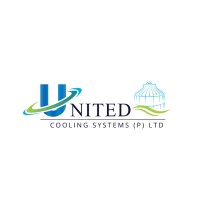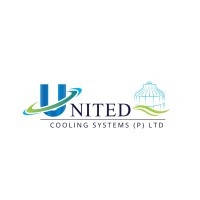Heat exchanger manufacturer

Strong 8k brings an ultra-HD IPTV experience to your living room and your pocket.
🔥 Heat Exchangers: The Unsung Heroes of Industrial Cooling and Efficiency
In almost every industrial process, from generating electricity to producing food or refining oil, heat is either a byproduct or a requirement. Managing this heat efficiently is critical—not just to maintain productivity, but to save energy, reduce costs, and protect equipment. That’s where heat exchangers come in.
Heat exchangers might not always get the spotlight, but they are essential behind-the-scenes components in countless systems around the world. Whether in large power plants or small HVAC units, these devices ensure smooth operations by transferring heat from one fluid to another without letting the fluids mix.
🔍 What Is a Heat Exchanger?
A heat exchanger is a mechanical device designed to transfer thermal energy (heat) between two fluids—usually liquid or gas. The key principle behind a heat exchanger is efficiency: it allows heat to move from one medium to another while keeping the fluids separate.
This might sound simple, but it’s a big deal. In many industrial settings, controlling temperature is essential. Whether it's heating crude oil in a refinery, cooling steam in a power plant, or regulating temperature in a pharmaceutical process, heat exchangers play a crucial role.
🌡️ Why Are Heat Exchangers So Important?
Here’s why heat exchangers matter so much:
Energy Efficiency: They recycle waste heat and reduce energy consumption.
Equipment Protection: They prevent overheating or sudden temperature changes that could damage machinery.
Environmental Benefits: They help industries lower their carbon footprint by cutting down on energy use.
Operational Safety: Stable temperatures mean safer environments for workers and systems.
Simply put, without heat exchangers, modern industry would struggle to operate safely, efficiently, or cost-effectively.
⚙️ How Does a Heat Exchanger Work?
At its core, a heat exchanger works on the principle of conduction and convection. One fluid flows through a set of tubes or plates while another fluid flows around or across them. A thermal barrier (usually made of metal) separates them, allowing heat to pass through while keeping the fluids apart.
For example, in a shell and tube heat exchanger, hot fluid flows through the tubes, and cool fluid passes through the shell. Heat is transferred through the tube walls, cooling one fluid and heating the other—all without mixing them.
This simple but smart process is scalable for both small and large systems.
🏭 Where Are Heat Exchangers Used?
Heat exchangers are incredibly versatile and used in a wide range of industries:
Power Generation: Used in boilers, condensers, and cooling towers to manage steam and water temperatures.
Oil & Gas: Essential for heating crude oil, cooling gases, and refining processes.
Chemical & Petrochemical: Used in reactors and separation processes to maintain temperature-sensitive reactions.
Food & Beverage: Ensure pasteurization, sterilization, and cooling in clean, hygienic ways.
HVAC Systems: Used in heating and cooling units for homes, offices, and industrial buildings.
Pharmaceuticals: Provide temperature control during manufacturing of medicines and sensitive materials.
Automotive: Found in radiators and transmission oil coolers to keep vehicles running smoothly.
🔧 Types of Heat Exchangers
Different industries and processes require different types of heat exchangers. Let’s explore the most common ones:
1. Shell and Tube Heat Exchanger
One of the oldest and most commonly used designs. Tubes carry one fluid, and a shell surrounds them, containing the other fluid. It’s ideal for high-pressure and high-temperature applications, such as in power plants or chemical industries.
2. Air Cooled Heat Exchanger
Instead of using water to remove heat, this type uses air blown by fans to cool hot process fluids. It’s perfect for areas where water is scarce or expensive. Air cooled heat exchangers are widely used in refineries and gas processing plants.
3. Plate Heat Exchanger
Built using thin, corrugated metal plates stacked together, this design offers high efficiency in a compact size. It’s commonly used in food processing, dairy industries, and HVAC systems.
4. Double Pipe Heat Exchanger
Consists of one pipe inside another—one carries the hot fluid and the other carries the cold fluid. It’s simple and cost-effective, ideal for small-scale applications.
5. Kettle Reboiler Heat Exchanger
Used in distillation columns, this design heats a liquid until part of it vaporizes. It’s a crucial part of refining and separation systems in petrochemical industries.
✅ Key Advantages of Using Heat Exchangers
Let’s take a closer look at the core benefits industries get from using heat exchangers:
Reduced Operating Costs: Recovered heat can be reused, reducing fuel or energy usage.
Sustainability: Lower energy waste leads to less environmental impact.
Increased Equipment Life: Maintains optimal temperatures, preventing thermal stress and damage.
System Reliability: Keeps machinery and processes running smoothly around the clock.
Compact Design: Many heat exchanger types save space while delivering high performance.
🏢 United Cooling Systems Pvt. Ltd. – Leading the Way in Heat Exchanger Manufacturing
When it comes to choosing a reliable partner for industrial cooling solutions, United Cooling Systems Pvt. Ltd. stands out as a trusted name. Based in India, the company has built a strong reputation for delivering high-quality, durable, and custom-designed heat exchangers across a variety of industries.
With decades of experience and a commitment to engineering excellence, United Cooling Systems manufactures:
Air Cooled Heat Exchangers
Shell and Tube Heat Exchangers
Fin Tube Bundles
Custom-Built Heat Transfer Equipment
Their products are known for:
High thermal performance
Long operational life
Easy maintenance
Compliance with international quality standards
From power generation to petrochemical refineries, United Cooling Systems Pvt. Ltd. supports industrial clients with reliable solutions that boost efficiency, reduce costs, and enhance performance.
🔚 Conclusion
Heat exchangers may not be visible on the factory floor or inside your AC unit, but they work silently and powerfully behind the scenes to keep temperatures under control, systems efficient, and processes safe.
Whether you’re running a refinery, building a power plant, or designing a cooling system for a commercial building, choosing the right heat exchanger makes all the difference. And partnering with a trusted manufacturer like United Cooling Systems Pvt. Ltd. ensures you get the right performance, quality, and value for your investment.
Note: IndiBlogHub features both user-submitted and editorial content. We do not verify third-party contributions. Read our Disclaimer and Privacy Policyfor details.


